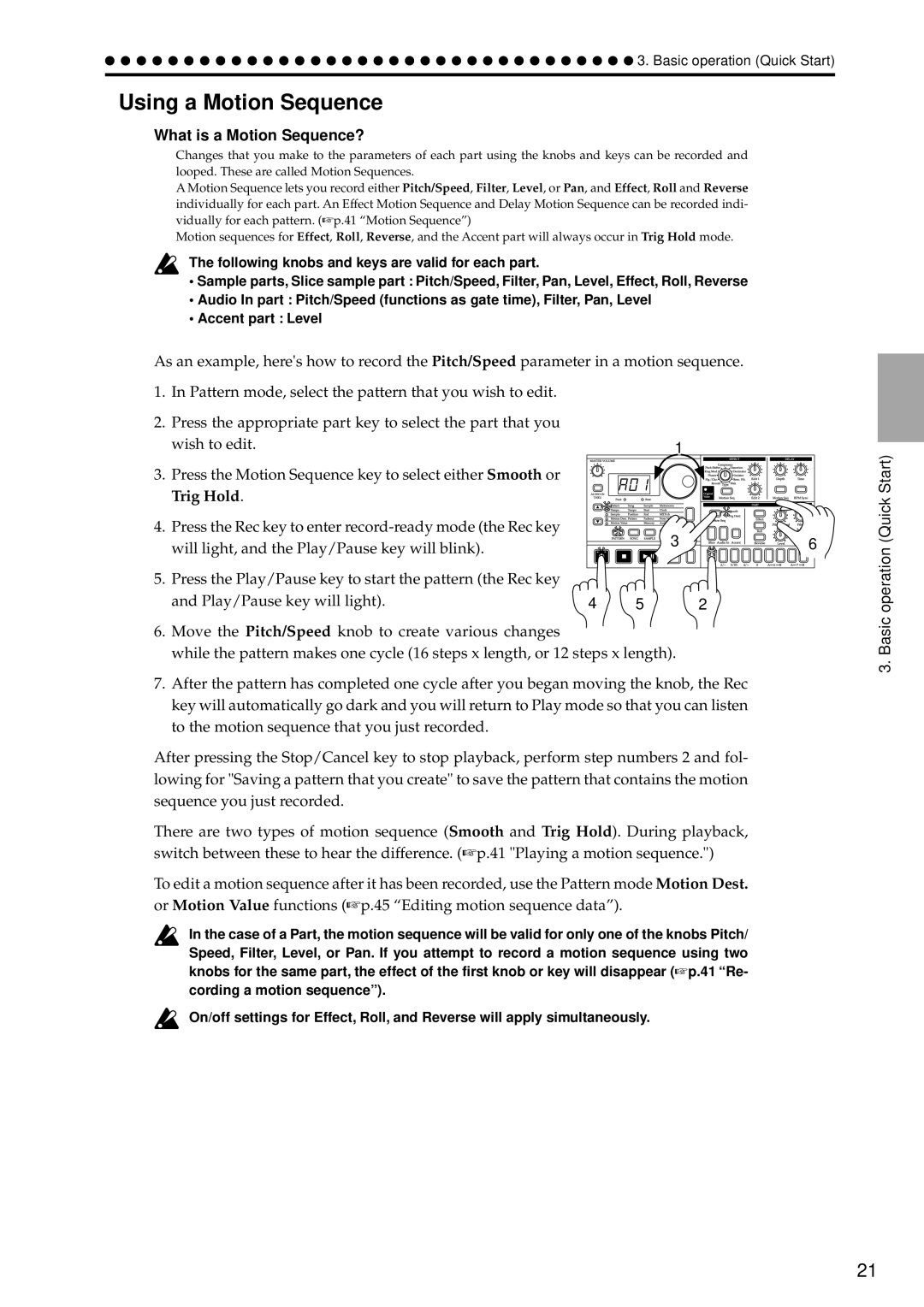
3. Basic operation (Quick Start)
Using a Motion Sequence
What is a Motion Sequence?
Changes that you make to the parameters of each part using the knobs and keys can be recorded and looped. These are called Motion Sequences.
A Motion Sequence lets you record either Pitch/Speed, Filter, Level, or Pan, and Effect, Roll and Reverse individually for each part. An Effect Motion Sequence and Delay Motion Sequence can be recorded indi- vidually for each pattern. (☞p.41 “Motion Sequence”)
Motion sequences for Effect, Roll, Reverse, and the Accent part will always occur in Trig Hold mode.
The following knobs and keys are valid for each part.
•Sample parts, Slice sample part : Pitch/Speed, Filter, Pan, Level, Effect, Roll, Reverse
•Audio In part : Pitch/Speed (functions as gate time), Filter, Pan, Level
•Accent part : Level
As an example, here's how to record the Pitch/Speed parameter in a motion sequence.
1.In Pattern mode, select the pattern that you wish to edit.
2.Press the appropriate part key to select the part that you
| wish to edit. |
| 1 |
3. | Press the Motion Sequence key to select either Smooth or |
|
|
| Trig Hold. |
|
|
4. | Press the Rec key to enter |
| 3 |
| will light, and the Play/Pause key will blink). |
| |
|
|
| |
5. | Press the Play/Pause key to start the pattern (the Rec key |
|
|
| and Play/Pause key will light). | 4 | 5 |
6. | Move the Pitch/Speed knob to create various changes |
|
|
| while the pattern makes one cycle (16 steps x length, or 12 steps x length). | ||
![]()
![]()
![]()
![]()
![]()
![]()
![]()
![]()
![]()
![]() 6
6
2
3. Basic operation (Quick Start)
7.After the pattern has completed one cycle after you began moving the knob, the Rec key will automatically go dark and you will return to Play mode so that you can listen to the motion sequence that you just recorded.
After pressing the Stop/Cancel key to stop playback, perform step numbers 2 and fol- lowing for "Saving a pattern that you create" to save the pattern that contains the motion sequence you just recorded.
There are two types of motion sequence (Smooth and Trig Hold). During playback, switch between these to hear the difference. (☞p.41 "Playing a motion sequence.")
To edit a motion sequence after it has been recorded, use the Pattern mode Motion Dest. or Motion Value functions (☞p.45 “Editing motion sequence data”).
In the case of a Part, the motion sequence will be valid for only one of the knobs Pitch/ Speed, Filter, Level, or Pan. If you attempt to record a motion sequence using two knobs for the same part, the effect of the first knob or key will disappear (☞p.41 “Re- cording a motion sequence”).
On/off settings for Effect, Roll, and Reverse will apply simultaneously.
21
